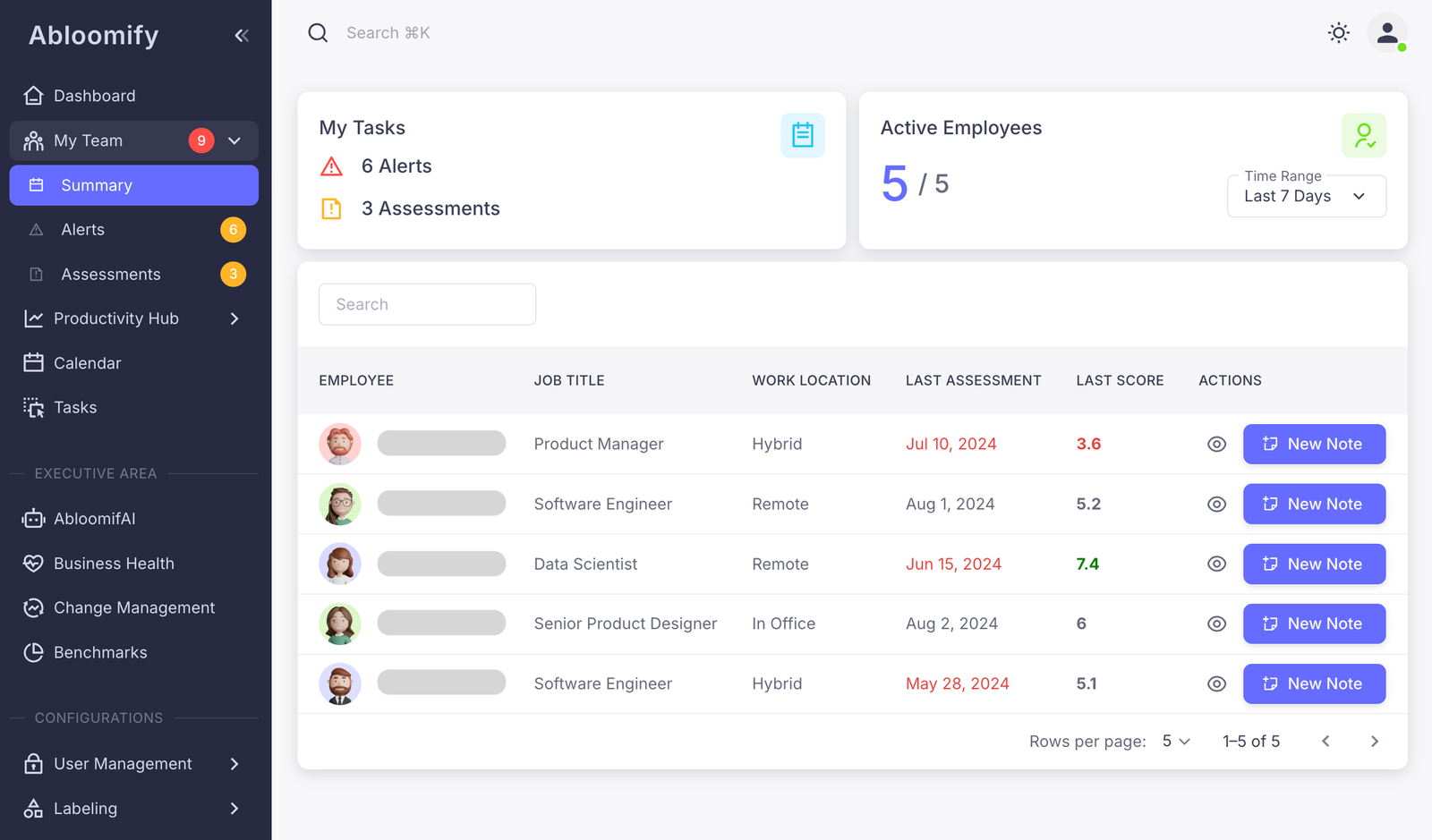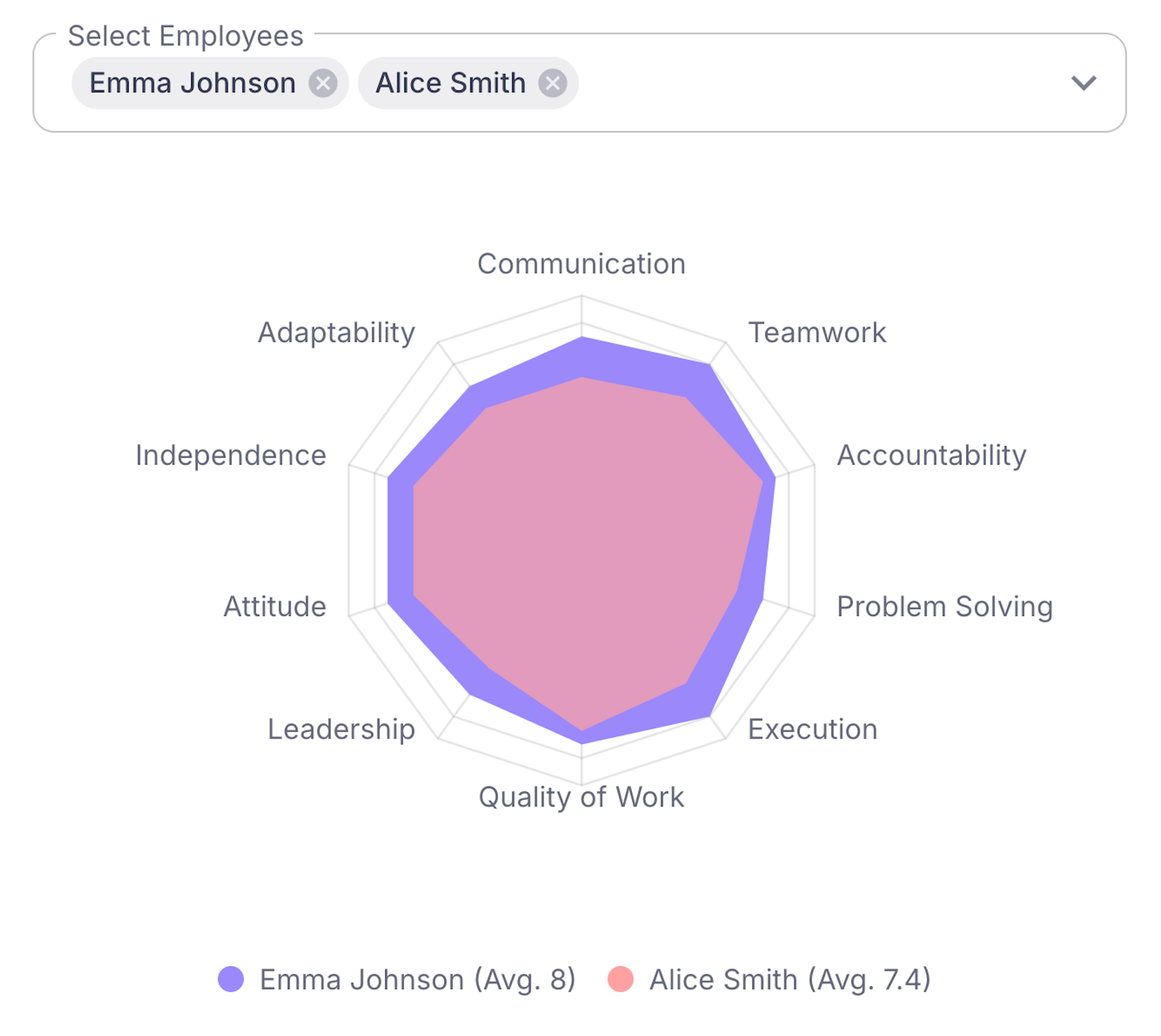Gaining a competitive edge in today’s tech landscape requires rethinking performance management strategies. Leveraging AI’s capabilities, leaders can enhance their team’s efficiency and productivity, resulting in sustainable growth and improved workplace dynamics.
Challenges in Traditional Performance Management
Traditional performance management practices face several challenges in the tech industry. These barriers often demand innovative approaches to truly empower teams. Consider the absence of real-time feedback, which is often deemed critical in the fast-evolving tech landscape. By the time feedback is provided, the value of immediate correction is lost. This delay hinders continuous development and prevents employees from learning and adapting quickly.
Productivity tracking poses another significant hurdle. Traditional methods often rely on outdated metrics that fail to capture the nuances of tech work—like creativity and problem-solving. There’s a reliance on arbitrary measures that don’t correlate with actual output or innovation. This mismatch results in frustration and disengagement among tech workers.
Managing burnout also emerges as a challenge, largely because traditional methods don’t prioritize work-life balance. In an era where mental health is increasingly recognized, the lack of focus on preventing burnout is a glaring oversight.
These challenges necessitate a shift toward modern solutions. Here, AI-driven approaches can be a game-changer. By leveraging AI, teams can access real-time insights and feedback, tailored to individual contributions and workloads. AI can assist in aligning goals with personal strengths, reducing the risk of burnout. This shift not only optimizes performance management but fosters a supportive work environment that enhances productivity and well-being.
Leveraging AI for Actionable Insights
Artificial Intelligence has emerged as a powerful catalyst for transforming performance management. By tapping into its potential, AI reshapes how leaders view team dynamics, turning complex data into effortless, actionable insights. Imagine a canvas painted not just with intuition but with precision metrics that reveal the beating heart of your tech team’s performance.
AI-powered platforms take a microscope to productivity trends, digging beyond surface metrics. They spot patterns, identify potential bottlenecks, and highlight risks before they escalate. Such profound analysis would be cumbersome, if not impossible, manually.
Consider the elegance of productivity alerts. These tools pinpoint exactly where attention is needed, offering leaders the agility to act swiftly. Real-time insights minimize guesswork, empowering decisions rooted in evidence rather than assumptions.
360° feedback collection is another gem AI refines. It’s not just about collecting opinions but ensuring they are precise and meaningful. The feedback loop becomes dynamic, fostering growth and aligning individual performances with overarching team goals.
Using AI tools means welcoming a shift in leadership approach. It encourages data-driven decision-making, which propels team improvements with a methodical yet human touch.
As we embrace these AI innovations, we align ourselves not just with technology but with a future where performance management transcends traditional boundaries. For more insights on AI-driven productivity transformation, explore this article on harnessing AI to optimize workforce performance.
Streamlining Processes with AI Manager Copilot
Imagine a landscape where tasks that once consumed hours are now automated with precision. The advent of AI-driven manager copilots is revolutionizing how tech teams operate. These tools go beyond mere automation; they liberate us from the mundane, allowing a renewed focus on innovation and strategy.
AI copilots streamline processes through automation in several ways:
- Meeting Scheduling: The AI assistant seamlessly coordinates multiple calendars to suggest the ideal meeting times, reducing back-and-forth communications.
- Agenda Preparation: By tailoring agendas based on past meetings and current objectives, these systems ensure every session is aligned with team goals.
- Continuous Performance Assessments: Regular, unbiased evaluations powered by AI provide insights that encourage growth and align productivity with business strategies.
The most compelling benefit lies in the time saved. Automated solutions drastically cut the admin workload, allowing leaders to focus on what’s crucial—strategic improvements and team development. In a world where creativity and innovation are vital, freeing up mental space for these pursuits is a game-changer.
As we embrace these AI tools, team dynamics evolve from transactional to transformational. No longer bogged down by operational inefficiencies, leaders and teams find new avenues for creativity. This shift empowers innovation, enhancing the overall performance landscape of tech teams. For more insights into leveraging AI solutions like this, consider visiting the intersection of technology and modern performance management.
Designing a Flexible Workforce Planning System
Flexibility in workforce planning is not just a perk; it’s a necessity for thriving tech teams. Catering to office, hybrid, and remote models is about capturing the essence of how work gets done in varying environments. A flexible planning system enables teams to adapt swiftly to change while remaining efficient and focused.
Capacity planning tools become the unsung heroes in this narrative. These tools allow leaders to pinpoint both shortages and surpluses in human resources, ensuring projects remain adequately staffed. In turn, workload balancing becomes more attainable, creating a semblance of harmony even in the most demanding cycles.
For teams, this approach yields multiple benefits:
- Increased resilience: Preparedness to shift workloads as needed reduces burnout and enhances team morale.
- Optimized resource utilization: Teams can pivot quickly with minimal disruption.
- Enhanced project delivery: Balanced workloads lead to consistent productivity, improving overall output quality.
Ultimately, a flexible workforce planning system fosters a culture of trust and adaptability. When leaders embrace this mindfully, they create environments where team members can thrive, regardless of location. The outcome is a resilient structuring that supports both individual and organizational goals.
To delve deeper into aligning workforce strategies with technological advancements, visit this insightful resource. It highlights choosing optimal work models for tech companies in a continuously evolving landscape.
Standardized Performance Management Framework
Imagine a performance management framework designed not just to evaluate but to elevate every team member. Picture a 10-category assessment that aligns employee aspirations with organizational goals. Here’s a vision that’s standard yet transformative:
– **Goal Alignment:** Does each member understand their role in meeting company objectives?
– **Skill Mastery:** Are the skills needed today and tomorrow being honed?
– **Innovation Contribution:** Is there a record of creative problem-solving?
– **Collaboration Skills:** How well does an individual work with diverse teams?
– **Leadership Potential:** Is there an untapped ability to lead others?
– **Adaptability:** Can they pivot with changes in technology or strategy?
– **Emotional Intelligence:** How adept are they at managing interpersonal dynamics?
– **Time Management:** Are deadlines consistently met without compromising quality?
– **Feedback Acceptance:** Is there an openness to constructive criticism for growth?
– **Cultural Fit:** Does the individual embody the core values?
Integrating AI into this framework provides dynamic career path planning and skill development recommendations. By seamlessly connecting where you’re at to where you want to go, AI fosters a culture of continuous learning. Employees are empowered with personalized growth strategies that align with business needs.
For management, standardization offers a clear, unbiased lens on team dynamics and individual development. It sharpens decision-making, supporting smarter, data-driven promotions and role changes. AI-driven insights enhance leadership capability while nurturing a thriving, engaged workforce. Explore how to transform your organization’s processes with an AI-powered performance management strategy.
Implementing Change Management in Technology Teams
Change management is crucial in tech environments. It helps technology teams adapt smoothly to alterations in processes or technology, minimizing disruptions and fostering productivity. Moving past the traditional resistance to change requires leaders to embrace tools that measure the impact of these changes effectively.
Metrics pave the way for understanding change. Consider tools that provide metrics like:
- Adoption Rates: Gauge how quickly and effectively the team acclimates to changes.
- User Feedback: Collect qualitative data to understand sentiment and identify areas for improvement.
- Efficiency Metrics: Analyze task completion times before and after implementing changes.
Technology investments also demand scrutiny. License usage analysis, for example, ensures that software spending aligns with team needs. This analysis can reveal:
- Underutilized Licenses: Redirect resources for unnecessary, idle software.
- Usage Patterns: Identify the most used tools to prioritize support and training.
- Scalability Opportunities: Adapt licenses as team growth demands.
A pragmatic approach to change management not only enhances performance management frameworks but supports a culture of growth. For more insight, explore this article on performance management techniques. Cultivating an adaptable culture empowers team members to embrace improvements, aligning with the goals of the organization.
Building Trust with a Privacy-First Design
Building trust within a team starts with respecting their privacy. In performance management, a privacy-first approach transforms potentially intrusive tools into allies. This approach nurtures trust by focusing on transparency and fairness, cultivating a sense of safety among team members.
Privacy-first designs prioritize:
- Aggregation over tracking: Tools should provide collective insights instead of monitoring individual actions. This method respects personal boundaries and reduces anxiety associated with constant surveillance.
- Clarity in communication: Clearly explaining how data is collected and used helps demystify processes, promoting trust.
- Voluntary participation: Allow employees to opt-in, giving them control over their personal data and reinforcing autonomy.
When employees trust that their privacy is respected, they are more likely to engage openly with performance tools. This trust not only enhances participation but also fosters a collaborative work culture. Over time, this contributes to a more cohesive team environment where innovation thrives.
In the long run, investing in privacy-first designs pays off. It leads to higher employee retention, reduced turnover, and a positively charged workplace atmosphere. Transparent approaches encourage open dialogues, vital in adapting to future changes rapidly. As workforce analytics become central to AI-driven transformations, maintaining this trust will be crucial for sustainable success in technology teams.
Final words
Embracing AI-powered strategies transforms performance management, enhancing team efficiency and growth. By leveraging tools and actionable insights, leaders empower teams to reach new levels of excellence. To explore these solutions, contact Abloomify for expert guidance.



